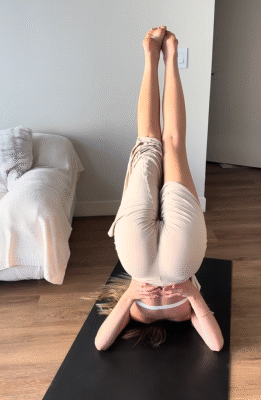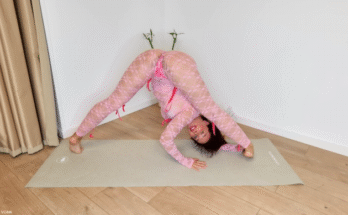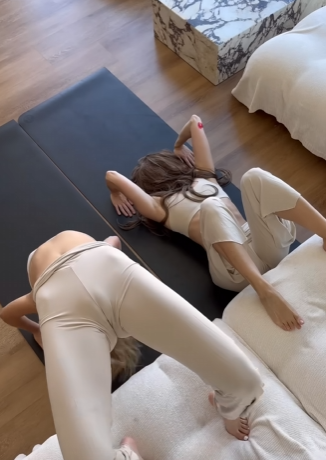
In our fast-paced world, taking a few moments to care for our bodies can make a big difference in how we feel, move, and perform. Stretching at home is one of the simplest and most effective ways to increase flexibility, reduce stress, and improve overall well-being. You don’t need fancy equipment, a gym membership, or even a lot of space—just a few minutes and a commitment to self-care.
The Importance of Stretching
Stretching is often overlooked in favor of more intense physical activities like running, weightlifting, or high-intensity workouts. However, stretching plays a critical role in maintaining joint health, preventing injury, and reducing muscle tension. It increases blood flow to muscles, helps relieve soreness, and improves posture—especially important for people who sit for long hours or work at a desk.
At home, stretching can also be a calming ritual that helps you slow down and reconnect with your body. Whether done in the morning to energize you for the day ahead, during a work break to relieve stiffness, or at night to relax before bed, stretching can be tailored to fit your lifestyle and goals.
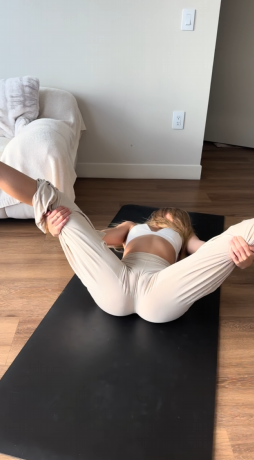
Setting Up Your Stretching Space
You don’t need much to start stretching at home. Here are a few tips to create a relaxing and effective stretching space:
- Choose a quiet area: A peaceful environment can help you focus and relax. A corner of your living room, bedroom, or even your balcony can work.
- Use a yoga mat or rug: A soft surface protects your joints and makes floor stretches more comfortable.
- Wear comfortable clothes: Loose, stretchy clothing allows for better movement.
- Play calming music (optional): Soft music can help you stay focused and make the experience more enjoyable.
Warm-Up First
Even though stretching may seem gentle, it’s still important to warm up your body before doing deep stretches. Cold muscles are more prone to injury. Try 3–5 minutes of light activity like marching in place, doing arm circles, or gentle jumping jacks to get the blood flowing.
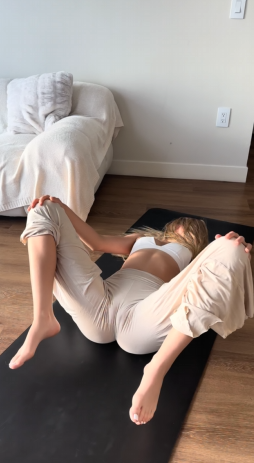
Basic Stretching Routine
Here’s a simple full-body stretching routine you can do at home in 10 to 20 minutes. Hold each stretch for 20–30 seconds and repeat 2–3 times. Remember to breathe deeply and never force your body into discomfort.
1. Neck Stretch
Sit or stand tall. Gently tilt your head to the right, bringing your ear toward your shoulder. Feel the stretch on the left side of your neck. Switch sides.
2. Shoulder Rolls
Roll your shoulders forward and backward in big circles to release tension.
3. Upper Back Stretch
Clasp your hands in front of you and push your palms away while rounding your upper back. This stretch targets the muscles between your shoulder blades.
4. Chest Opener
Clasp your hands behind your back and gently lift your arms while pressing your chest forward. Great for counteracting the effects of sitting or hunching over screens.
5. Side Stretch
Stand with your feet hip-width apart. Raise your right arm overhead and lean to the left, keeping your hips stable. Switch sides. This stretches the side body and improves flexibility in the waist.
6. Hamstring Stretch
Sit on the floor with one leg extended and the other bent. Lean forward over the extended leg, keeping your back straight. Switch sides. This stretch loosens the back of your thighs.
7. Quad Stretch
Stand on one foot (hold a wall for support if needed), bend the other knee and bring your heel toward your glutes, holding your ankle. Feel the stretch in the front of your thigh. Switch legs
8. Hip Flexor Stretch
Kneel on one knee with the other foot in front (like a lunge). Push your hips forward gently. This is especially good for people who sit for long periods.
9. Butterfly Stretch
Sit with the soles of your feet together and let your knees fall outward. Hold your feet and gently press your knees down. A great stretch for the inner thighs and hips.
10. Calf Stretch
Stand facing a wall. Step one foot back and press your heel into the floor. Keep your back leg straight and bend your front knee. Switch sides. This helps reduce tightness in the calves.
11. Child’s Pose
Kneel on the floor, sit back on your heels, and stretch your arms forward on the ground. Rest your forehead on the mat. This calming pose stretches the back, hips, and shoulders.
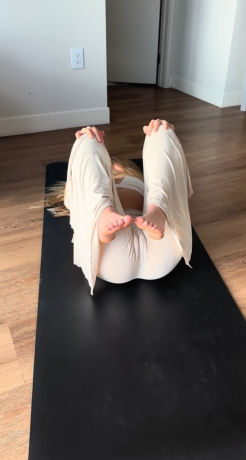
Tips for Safe and Effective Stretching
- Don’t bounce: Use slow, steady movements. Bouncing can lead to muscle strain.
- Breathe deeply: Inhale through your nose and exhale through your mouth to relax more deeply into each stretch.
- Listen to your body: Stretching should feel good—not painful. Ease off if you feel any sharp or intense discomfort.
- Be consistent: Just 10–15 minutes a day can bring noticeable improvements in flexibility and well-being over time.
- Stay hydrated: Drinking water helps your muscles stay supple.
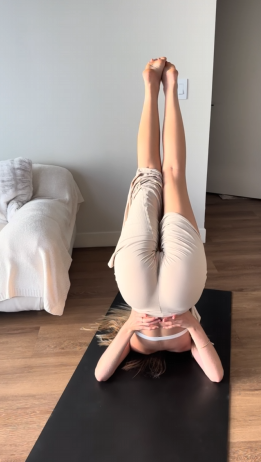
Benefits You’ll Notice
By making stretching a part of your daily routine, you’ll likely notice some of these benefits within a few weeks:
- Improved posture: Less slouching, more upright confidence.
- Reduced muscle tension: Especially in your neck, shoulders, and lower back.
- Better flexibility: Everyday tasks like bending, reaching, or tying your shoes become easier.
- Enhanced mood: Stretching helps release endorphins, the body’s natural “feel-good” chemicals.
- Deeper sleep: A gentle stretching routine before bed can calm your mind and body for restful sleep.
Making It a Habit
To make stretching a habit, try these simple strategies:
- Set a reminder: Add a daily alarm or calendar event to stretch.
- Pair it with another activity: Stretch while watching TV, after brushing your teeth, or before your morning coffee.
- Track your progress: Keep a journal or take before-and-after photos to see improvements in your flexibility.
- Join an online class: Follow along with free stretching or yoga videos to stay motivated.
Final Thoughts
Stretching at home is an accessible, powerful way to improve your body’s function and reduce daily stress. Whether you’re an athlete, a busy parent, or someone recovering from long hours at a desk, daily stretching can help you move more freely and feel better in your own skin. And best of all, it only takes a little time and commitment to start seeing—and feeling—the results.
So roll out your mat, take a deep breath, and give your body the care it deserves.
